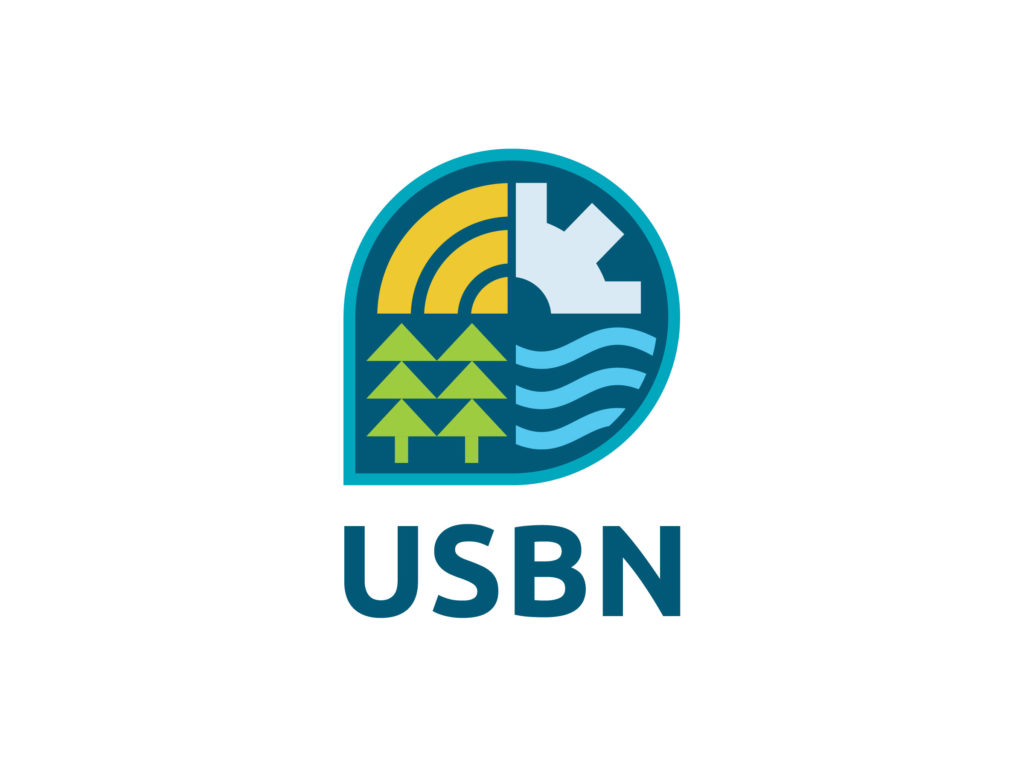NEWS RELEASE
Nonprofit leader in connectivity conservation will enhance the network’s efforts to connect people with nature
BOZEMAN, MT, May 31, 2022 – Biosphere regions are special places recognized internationally for their unique beauty, cultures, and economic value to society. They also contain landscapes and seascapes important to the well-being of humans and wildlife alike. Recently, these regions gained a new champion in their stewardship: the Center for Large Landscape Conservation announced today that they will support the United States Biosphere Network (USBN), a voluntary network representing the 28 biosphere regions located in the U.S., as a fiscally sponsored project.
The Center—the leading nonprofit organization focused on restoring ecological connectivity—will lend their science, policy, and capacity-building expertise to help strengthen the network of biosphere regions. As the fiscal sponsor of USBN, the Center will “incubate” the network and provide them with strategic counsel, infrastructure, access to their other national networks and partnerships, and organizational management.
“Caring for these biosphere regions is critical for helping to preserve biodiversity, and building stronger, healthier communities that are resilient to environmental change,” says Deb Kmon Davidson, VP for Partnerships & Advancement at the Center. “We look forward to sharing and applying best practices from our worldwide conservation experience to help raise USBN’s work to the next level.”
By positioning the network under the umbrella of its 501(c)(3) organization, the Center can receive tax-deductible donations and grants on behalf of USBN, which receives limited government funds. The network was recently awarded its first grant from the North American Commission for Environmental Cooperation. The CAN$160,000 grant is intended to help USBN, in collaboration with the Canadian Biosphere Regions Association, implement model environmental initiatives in North American communities that will help build long-term partnerships and promote a shared responsibility and stewardship for the environment.

Brian Houseal, Chair of the U.S. Biosphere Network, says that “while public lands are at the heart of each U.S. biosphere region, these regions are unique because they also focus on partnerships with private lands and local communities with working farms, forests, fisheries, and recreation and tourism opportunities.
“Good examples of people caring for their lands can be found across the country. Our public lands are beloved by millions for their treasured landscapes and seascapes, but these precious natural systems connect across the park entry gates. They extend well beyond borders and support vibrant human and wildlife communities,” says Houseal.
Biosphere regions are based on the idea that people and nature are not separate. In these spectacular places, citizens and organizations cooperate to enhance quality of life by maintaining the beauty and benefits of nature for local economies.
“This collaboration with the Center will strengthen on-the-ground efforts to address environmental change, loss of biodiversity, and development of local communities and their economies,” says Houseal. He adds, “the USBN is a voluntary, non-regulatory, grassroots network. Communities and organizations in biosphere regions are showing how people and nature can thrive together and provide local solutions to global challenges.”
The 28 U.S. biosphere regions are located throughout the continental United States, the U.S. Caribbean, Alaska, and Hawai’i. They encompass a wide range of landscapes including deserts, forests, grasslands, rivers, mountains, oceans, and coasts.
Learn more about US Biosphere Regions
Biosphere Region FAQs
Map and list of US Biosphere regions
About the Center for Large Landscape Conservation
The Center for Large Landscape Conservation is the hub of a growing global movement to reverse fragmentation of the earth’s large landscapes. It works to connect natural areas, support healthy wildlife habitats and safe migration for wide-ranging animals, and safeguard nature’s resilience to climate change. The Center accomplishes this by sharing science, policy, and network-building expertise with partners around the globe, with a vision of creating a world where humans and wildlife thrive in healthy, connected ecosystems.
About the U.S. Biosphere Network
The US Biosphere Network (USBN) is made up of 28 internationally recognized areas across the continental United States, the U.S. Caribbean, Alaska, and Hawai’i. Their beauty and value stand out in national parks, state parks, national forests, national marine sanctuaries as well as tribal and private lands, from deserts to forests, grasslands to rivers, and mountains to coasts. Biosphere regions are voluntary and nonregulatory. Private property rights and the respective jurisdictions of local, state, tribal, federal and local governments are not affected. Communities and partners within them work together to advance positive relationships between people and nature at large geographic scales. As part of the World Network of Biosphere Reserves, the USBN fosters national and international connections among biosphere regions, facilitates their sharing of best practices, and supports their work toward connecting people and nature.
Contact: Christine Gianas Weinheimer
Center for Large Landscape Conservation
(406) 578-1579
communications@largelandscapes.org
Photo: Green River, Mammoth Cave Biosphere Region, Kentucky – NPS Photo




